
Tools to help journalists produce content which readers can deep-dive into
Credit: ThinkStockWith publishers keen to keep viewers engaged, many are looking at opportunities to offer more immersive storytelling experiences, and add greater depth to the content they are producing, be it text, video or images.
A number of news outlets have worked to produce content which delivers a more immersive experience than traditional templates or styles may allow, such as the oft-cited New York Times Snow Fall feature, which it later followed up with its Jockey piece. And there have been plenty of other similar projects before and since by other outlets as well, from Pitchfork's Bat For Lashes feature to the Guardian's Firestorm package.
While the full-screen design of these features is a significant contributor to the feeling of a more immersive environment, this is not the only factor. News outlets are also looking at ways to encourage greater interaction with video, audio and images, in a way which enhances the potential engagement with the reader, and depth of storytelling.
This feature looks at a handful of online tools already available, or due for public launch soon. If you have any other suggestions please add them in the comments section at the end.
- Immersive long-form
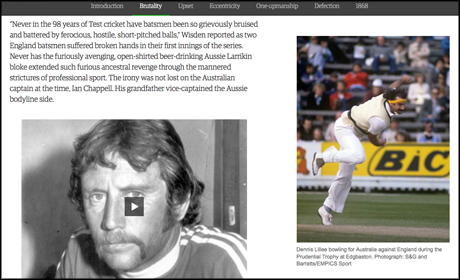
Shorthand has already worked with the Guardian to help them produce this long-form feature on the Ashes, and is due to be released in private beta at the end of this month, before a public launch next year which will include a free version of the tool.
Speaking at news:rewired last month founder Ben Fogarty showcased the simple publishing interface to delegates, highlighting the ease at which users can add text and images, which can then be made to move as the reader scrolls down the page.
The aim of the platform is to help journalists make content that will "wow and amaze", Fogarty said.
2. Scroll Kit
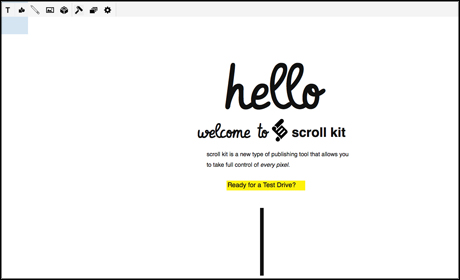
The aim of Scroll Kit is to help "make stories people want to touch". The platform lets users easily produce full-screen stories, with simple tools to add text, images, background colours, as well as free-hand drawing tools to make the page their own.
Once completed a Scroll Kit can be published to its own web page, and it appears that news sites can also publish them on their own sites, based on its use by existing partners such as PandoDaily.
- Immersive images
ThingLink can be used by news sites to turn a still image into a hive of information. The technology lets users add points of interest to an image, which can then have an array of media attached.
It has been used in a number of different ways by media outlets, from adding detail to a map like the Washington Post example above, through to offering shoppable links to clothes featured in images on magazine websites.
Here is an example from outside the news industry. This ThingLink was published by the Metropolitan Police yesterday, showing the investigation in to the disappearance of Madeline McCann.
ThinkLink also offers a free smartphone app.
Another platform which offers similar functionality is called TaggStar.
- Immersive video
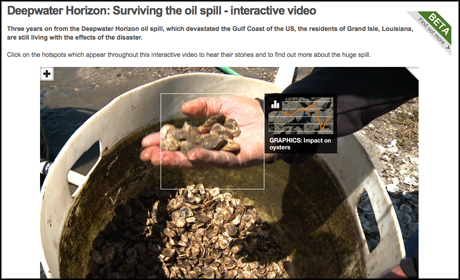
WireWAX lets users add interactivity to video by finding and allowing for the application of 'hotspots' to objects within the video. The hotspot will move along with the image in question while in frame.
The technology was used by the BBC in a documentary on the Deepwater Horizon oil spill, adding in links to the hotspots to coverage such as video footage and infographics, for those who wanted to explore that part of the story further. The video is paused while the viewer dives in further, before returning to where they broke off from the underlying narrative.
While the BBC project was a custom offering from WireWAX, there is also a free version of the tool.
5. Zentrick
Zentrick also allows users to make video interactive by adding links to parts of the footage. Earlier this year, Journalism.co.uk reported on the Wall Street Journal's use of the technology to produce its video on US health care reform.
Zentrick also offers a free browser-based editing suite, which is made up of different 'boards' to create the content on. Users can bring in video and then use the 'apps board' to add in additional features, such as link buttons, and start to build up the interactive elements in the video.
6. Metta
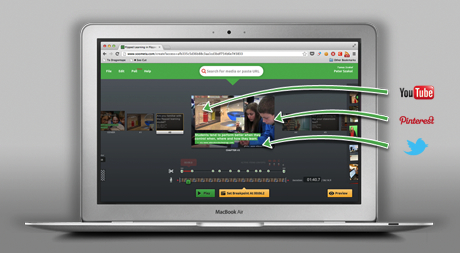
Metta, originally called Soo Meta, is supported by a curational framework, which enables users to bring in the usual range of content into a video player, as well as other offerings such as the ability to ask questions of the viewer using its polls feature.
As well as being able to search for content to include in a package from within the platform, users can also collect and store content as they surf the web, using the Metta plugin.
7. Meograph
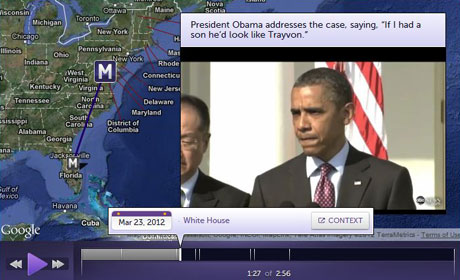
Meograph first launched in July 2012, and lets users produce packages containing video, audio and links, with the option of also plotting stages of the story on a map and timeline.
It also recently introduced the ability to tag people appearing in content, and link it to their Facebook accounts, with the intention to also bring Facebook pages into the facility, as well as "custom-defined tags", in time.
8. Popcorn Maker
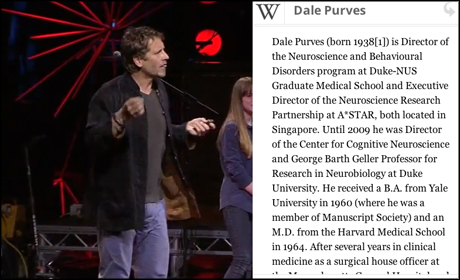
Popcorn Maker, created by Mozilla, lets users create social video. This is another browser-based tool where users apply additional 'events' to an underlying video or audio file. This includes the standard options of images and links, as well as entries from Wikipedia and Google Maps, which viewers can explore further from within the package.
This could be used to illustrate where an event being discussed in the video took place, for example. The BBC used the Popcorn JavaScript library to produce this interactive of the last movements of Ian Tomlinson, the newspaper vendor who died on the day of the G20 protests in London in 2009.
9. Storygami
This is yet to be released as a public tool, but based on descriptions it looks like another potentially interesting interactive video platform for journalists.
The technology was used to produce the video above, for Virgin Media's Pioneers programme. In a promotional video, embedded below, the team also outlines how it could be used by news outlets to offer background information to a video report, or links to other news stories. This could help viewers understand a story in greater depth than a video could perhaps do on its own.
Guy Gunaratne, chief commercial officer of Storygami, told Journalism.co.uk over email that the team plans to launch a video editor next year, and in the meantime is "looking to partner with journalists and news agencies over the next few months to incorporate features into the tool itself".
Free daily newsletter
If you like our news and feature articles, you can sign up to receive our free daily (Mon-Fri) email newsletter (mobile friendly).









